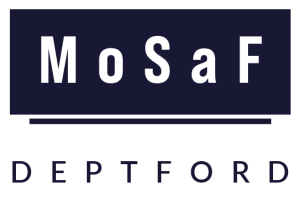If you have visited out About page, you will have read that for more than three months, vessels constructed in Deptford were:
the watery home of those previously enslaved people who, in hope of a better life, headed for liberty in Sierra Leone in the 1780s.
We thought that it was important to tell that story, to explore its connections to Deptford and to understand how the lives of these formerly enslaved people changed forever.
The “Black Poor”
In 1772, slavery on British soil was deemed unlawful following the case of Somerset v Stewart. This meant that enslaved people who’d been living in Britain (often working in domestic households) were liberated. Some became part of the a subsection of people living in London in poverty, referred to as the ‘Black Poor’. The Committee for the Relief of the Black Poor was established in 1786 to offer financial and medical aid. It created a plan for the so-called ‘Black Poor’ to settle in Sierra Leone in West Africa. This scheme was supported by the government, and by leading abolitionist Granville Sharp amongst others.
The Sierra Leone Resettlement Scheme, 1787
The naturalist Henry Smeathman chose Sierra Leone as a suitable location. The new colony was proclaimed as the ‘Province of Freedom’. However, Smeathman exaggerated its potential. The government encouraged the ‘Black Poor’ to join the resettlement scheme, which was financially supported by the Treasury, and issued each person with a certificate as a free citizen of the ‘Colony of Sierra Leone’. This was necessary because slavery was still in operation in Sierra Leone.
Olaudah Equiano – abolitionist, writer, and formerly enslaved person with ties to Deptford – was the Commissary of Provisions and Stores for the Black Poor going to Sierra Leone. He nevertheless became one of the scheme’s most vocal critics. He established an open discourse with abolitionist, political activist, and natural rights philosopher, Ottobah Cugoano who wrote:
“For as it seemed prudent and obvious to many of them taking heed to that sacred enquiry, Doth a fountain send forth at the same place sweet water and bitter?… can it be readily conceived that government would establish a free colony for them nearly on the spot, while it supports its forts and garrisons, to ensnare, merchandize, and to carry others into captivity and slavery”.[1]
Concerns around the proximity to the slave trade amongst the Black Poor’, as well as the death of Smeathman and philanthropist Jonas Hanway, meant that the ships commissioned for the journey remained docked at Deptford for months. These were the vessels that became “the watery home of those previously enslaved people” as described on our About page.
It was in January 1787 that the Atlantic, the Belisarius and the Vernon finally left London for Sierra Leone. Their records can still be searched online today. Following stops in Portsmouth and Plymouth, the first ships arrived in Frenchman’s Bay (as it was then known) at the beginning of Sierra Leone’s rainy season. It was a disastrous start.
Granville Town
The first settlement founded under the scheme was named Granville Town after Sharp. But it soon became clear that a lack of official support, disease, hunger, and the ever-present threat of enslavement created a hostile environment. Abraham Elliott Griffiths, a protege of Sharp, reported to him:
“I am sorry, and very sorry indeed, to inform you, dear sir, that this country does not agree with us at all; and without a very sudden change, I do not think there will be one of us left at the end of twelvemonth … There is not a thing which is put into the ground, will grow more than a foot out of it….it is quite a plague seems to reign here among us”.[2]
Around two years after the first boat docked, following fighting between the British forces and the local Temne people, Granville Town was burnt to the ground on the orders of Temne Suzarain, King Jimmy.
Historians continue to debate the motivations behind the scheme. At first sight, it was an altruistic act to resettle peoples displaced during the triangular slave trade. Another perspective focuses on the fact that the emigrants also included people who had stayed loyal to the British in the American War of Independence. They had been resettled in London and some historians have, therefore, wondered if the scheme provided a way to ‘support’ these Black loyalists. A third explanation is that the scheme was created to reduce the number of Black people in London. It may well have been a combination of all three.
If you are interested in learning more about our campaign to establish a Museum of Slavery and Freedom in Deptford, keep an eye on our ‘What’s On‘ page, discover four ways to be involved, and sign up to our quarterly emails here.
Footnotes
[1] Cugoano, Ottobah. Thoughts and Sentiments on the evil of slavery and other writings. 1787 Available version 1965, 141-142
[2]Hoare, Prince. Memoirs of Granville Sharp. Colburn:1820, 320-321.
Suggested Reading
- Find My Past, “What was the Sierra Leone Resettlement Scheme?”
- David Olusoga, Black and British: A Forgotten History.
- John Idriss Lahai, Human Rights in Sierra Leone,1787-2016: The Long Struggle from the Transatlantic Slave Trade to the Present
- Stephen J Braidwood, Black Poor and White Philanthropists: London’s Black and the Foundation of the Sierra Leone Settlement, 1786-1791
